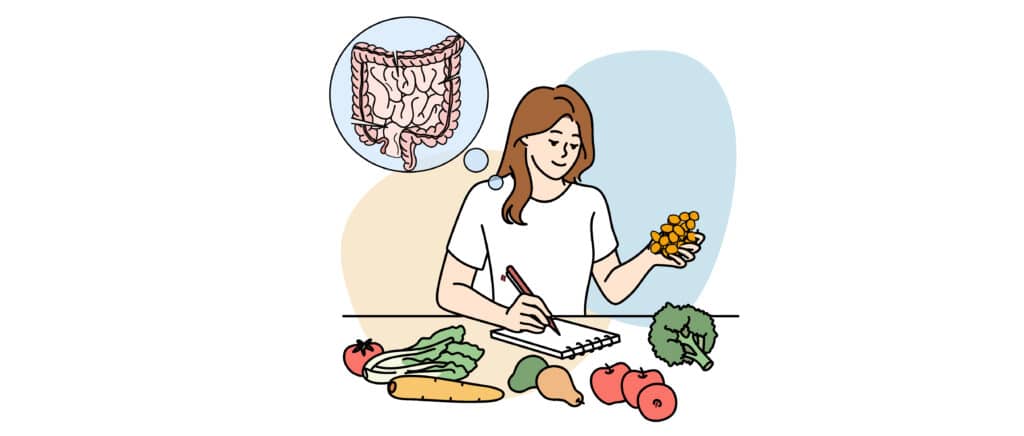Understanding Nutrition Labels
- A nutrition label shows the consumers the nutrient content of the food item.
- The different sections of nutrition labels include serving information, nutrient information, special food indicators, and percent daily value.
- Make sure to look out for added sugars and misleading labels.
- Recent changes in nutrition labels were made to help the consumer decide on their food items.
Just the thought on how to understand nutritional labels can seem daunting, and even incomprehensible. This is especially true, for those that do not know what to look for. Nutrition labels are often stacked with long and complex-sounding ingredients. These can be anything from preservatives, flavor additives, and artificial dyes. For those who want to make sure they understand what is in their food, nutrition labels are a vital piece of the puzzle.
What are Nutrition Labels?
Nutrition labels describe the nutrient content of foods. They are added to assist consumers in choosing food selections that meet their dietary necessities and preferences. There are required guidelines for nutrition labels and dietary recommendations, so nutrition labels must all follow a similar pattern. Most prepared foods are required to have this label. In fact, you can find this in common foods, such as bread, grain products, canned foods, and frozen foods. You will even find this in sweets, desserts, drinks, and so on. Raw foods, such as meat and produce, are not required to have nutrition labels. Fortunately, their nutrition per volume can easily be found with a quick Google search.
Food labeling practices may vary by country. This is because they are influenced by national public health goals, food regulations, dietary patterns, and health concerns. Often, countries choose standardized formats for nutrition label information. This is to make it easier to compare similar items when deciding between brands or flavors. It is also important that individuals are able to see if products contain ingredients that they may be allergic to or intolerant of, such as gluten or dairy.
How to Understand Nutritional Labels
Serving Information
When you first look at a nutrition label, you should look for the serving information at the top of the label. This will indicate how many servings are in the container. Serving information includes recommended serving sizes. This can help inform you how much of the food or drink you should consume in one sitting.
This is a large problem in many Western countries, as people tend to consume much more than the recommended serving size. This ends up in a calorie surplus, which can lead to significant weight gain over time.
To help combat this behavior, some packages contain two columns of nutritional information: one for a single serving, and one for the entire container. This helps draw attention to how many servings are in one container when otherwise consumers may assume the nutrition information is for the entire package. In fact, nutrition facts and labels were updated in 2016. This was done in order to increase the font size of the serving size information. This would hopefully draw more attention to this information.
Calorie Information
Another piece of information on nutrition labels that was recently enlarged and bolded is the calorie information. The number of servings you consume indicates the number of calories you eat or drink. This figure is often much higher than what people anticipate, which is based on the calorie count in one serving size. A calorie surplus, maintenance, or deficit determines weight loss, maintenance, or weight gain based on the energy you burn during daily activities and exercise.
Nutrient Information
The next thing you should look at is the nutrient information. This section indicates which key nutrients are being provided by the food or drink for your body. Saturated fat, sodium, and added sugars are all nutrients listed on the nutrition label. These are harmful to your body in excess amounts. Therefore, it is important to note that not all nutrients listed are beneficial in high numbers. Some vitamins are required to be listed on nutrition labels, such as Vitamin D and potassium, but some are optional, such as Vitamin A and C. Therefore some nutrition labels may look slightly different.
Added Sugar
One thing to specifically watch out for on nutrition labels is added sugar. You will see this under carbohydrates and sugar in a specific section for “added sugars.” Added sugars are harmful to your health in high amounts, and the US Food and Drug Administration (FDA) recommends limiting foods with added sugar.
Percent Daily Value (%DV)
A helpful piece of information that most people overlook is the percent daily value of different nutrients (labeled as %DV). The %DV stands for the percentage of your recommended daily amount (RDA) of this particular nutrient in one serving of the food or drink. This reference value can help to not over consume certain nutrients. It also makes sure that you are choosing a variety of foods with different health benefits. The %DV can also help you determine whether a food is characterized as high or low in a particular nutrient. If a nutrient is 5 %DV or less, it is considered low. If it is 20 %DV or more, it is considered to be high.
The footnote on a nutrition label explains the %DV and gives the number of calories used for general nutrition advice, which is in most cases 2000 calories per day. This will often read as “The % Daily Value tells you how much a nutrient in a serving of food contributes to a daily diet. 2,000 calories a day is used for general nutrition advice.”
Special Food Indicators on Nutrition Labels
Sometimes, foods may be labeled as having “reduced” values of a particular nutrient such as sodium, or other claims such as “low cholesterol.” Some common ones and their corresponding meaning are in the table below.
Label | Meaning |
Low calorie | 40 calories or less |
Low cholesterol | 20 milligrams or less and 2 grams or less of saturated fat per serving |
Reduced | At least 25% less of the specified nutrient or calorie count than the usual product |
Good source of | At least 10 to 19% of your Daily Value of a particular nutrient |
Excellent source of | At least 20% or more of your Daily Value of a particular nutrient |
Calorie-free | Less than 5 calories per serving |
Low sodium | 140 milligrams or less of sodium per serving |
High in | Provides 20% or more of the Daily Value of a particular nutrient |
What To Look For
When you are choosing a product, try to look for ones low in saturated fat, added sugars, and sodium. In particular, try to avoid consuming more than 10% of your daily calories from added sugars. Products high in these categories are okay in moderation, but the harmful health effects can add up fast when consumed in excess.
Over recent years, there have been a number of nutrition label changes meant to aid the average consumer in finding the information they are looking for. As mentioned earlier, “calories,” “servings per container,” and “serving size” were all increased in size to draw attention to them. Servings sizes were also updated to be more realistic to what the average person will consume, rather than what is strictly the recommended amount.
Understanding nutrition labels can seem daunting at first, but understanding what to look for (and what to avoid!) can help you make informed choices when selecting foods. Remember that long-term patterns are more important for your health than one-time treats. Try not to fret too much if you have a sweet with a little added sugar here or there. Overall, try to choose foods that are high in healthy vitamins and minerals and low in saturated fats and added sugars. You will soon see how your body thanks you!
Summary
Nutrition labels are required on most products to help members of the public make informed choices about what they are consuming. Certain nutrient amounts, such as calcium and Vitamin D, are required on nutrition labels, while other nutrients such as Vitamins A and C are optional. Nutrition labels can help you find products that are specifically high in certain nutrients, such as fiber or protein. Products are often even labeled in accordance with whether they stand out from related brands in certain areas. This includes signs like being low in sodium or high in iron. Paying attention to nutrition labels can help you have a balanced diet. It will also make sure that you are not consuming over the recommended serving sizes of different products.
Scientific Information
- Calorie: This is the amount of energy you get from a particular serving of food.
- Percent daily value (%DV): This is the percent of a certain vitamin, mineral, or calorie count out of your total daily recommended consumption included in one serving size.









